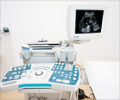Procedures and Risks
Two steps involved in a SPECT scan are:
Injection of a radioactive substance: An intravenous injection of a radioactive tracer will be administered and the patient has to wait for it to spread throughout the body. The patient will be asked to wait for a few minutes to a few hours, till the tracer spreads to the desired area of scan.
Undergoing the SPECT scan: The patient is made to lie on a narrow table inside a ring shaped scanner for about 30 to 40 minutes. The CT scan is done first where the X-ray machine rotates over a 360 degree arc around the patient to record and construct three-dimensional images.
The SPECT scan involves a special camera that captures the gamma rays produced by the radioactive tracer. The emissions from the tracer indicate the quantity of blood flow in the regions that are scanned. The gamma camera moves around the patient to obtain SPECT images with projections acquired every 3-6 degrees and records multiple 2-D images. These images are consolidated by the computer to produce a tomographic reconstruction, yielding a 3D image.
SPECT Scan of Organs
SPECT Scan of Brain: Cerebral blood flow is closely linked to neuronal activity and tracking the blood flow in brain can reveal neuronal activity levels in various areas of the brain. SPECT scan of brain reveals the following medical conditions of the brain:
- Cerebrovascular disease
- Dementia
- Focus of seizure
- Brain trauma
- Brain death
- Infection or inflammation of brain
- Neuropsychiatric disorders like attention-deficit disorder, mood disorders
- Substance abuse
SPECT Scan of Heart: SPECT scan of heart can be done in rest and as exercise-stress test and blood flow through the coronary arteries can be tracked. Electrodes are also placed to record simultaneous electrocardiogram.
The blood flow, or perfusion, is assessed at rest by lying down on the SPECT scanner table before exercise. The nuclear stress test involves SPECT scan after exercise. Comparing the images of blood flow during rest and after exercise gives a clear picture about the normal perfusion and function of the heart as compared to coronary blocks or scarring.
Blockage in one or more coronary arteries, especially after exercise, is indicated by areas where little to no uptake of the tracer is seen. This lack of tracer shows that cells in that area are dead from a prior attack and have become a scar tissue.
SPECT Scan of Bone: SPECT bone scan does not need to be tested on an empty stomach, but emptying the bladder is required. The scan is done after 3 hours of injection of the tracer. Various types of pathology that can be detected by a SPECT bone scan.
- Perfusion to a lesion in the bone
- Blood pool image indicates relative blood supply to an area
- Dilated capillaries in areas with inflammation show pooling of the tracer
The conditions of the bone identified include:
- Arthritis
- Fractures
- Cancer originating from bone
- Cancer that has spread to the bone from other parts
- Infection of joints
- Impaired blood supply to the bones
Parathyroid SPECT scan: Images obtained from SPECT scanning of the parathyroid glands helps in detecting and finding the exact location of the ectopic mediastinal adenomas surrounding the glands. It helps in minor parathyroid surgery also.
SPECT White Cell Scan: Blood sample is taken from the patient and white blood cells are separated from the blood. These WBCs are then mixed with a radioactive material and injected into the bloodstream intravenously. A SPECT scan is done after 6 to 24 hours later. SPECT scan of WBCs is done to detect a hidden infection such as liver abscess, abdominal abscess or inflammation in the bones.
SPECT for Neuroendocrine Tumors: SPECT scan helps in the exclusion, identification and finding the exact location of the primary neuroendocrine tumors and also those that have spread from other parts of the body.
Risks of a SPECT Scan
The radioactive isotope injected into the body is so small that it does not have any effect in the normal functioning of the body. Very rarely, an allergic reaction to the radioactive tracer may be seen.
The patient will be instructed to take a lot of fluids after the test, to flush out any extra radioactive substance.
However, the radiation could be harmful to an unborn fetus or can affect a breastfeeding woman. So, pregnant and lactating women must not undergo SPECT scan. Others who have taken the test need to avoid being close to pregnant and lactating women, until the radioactive tracer gets out of the body. This normally takes about two days.










